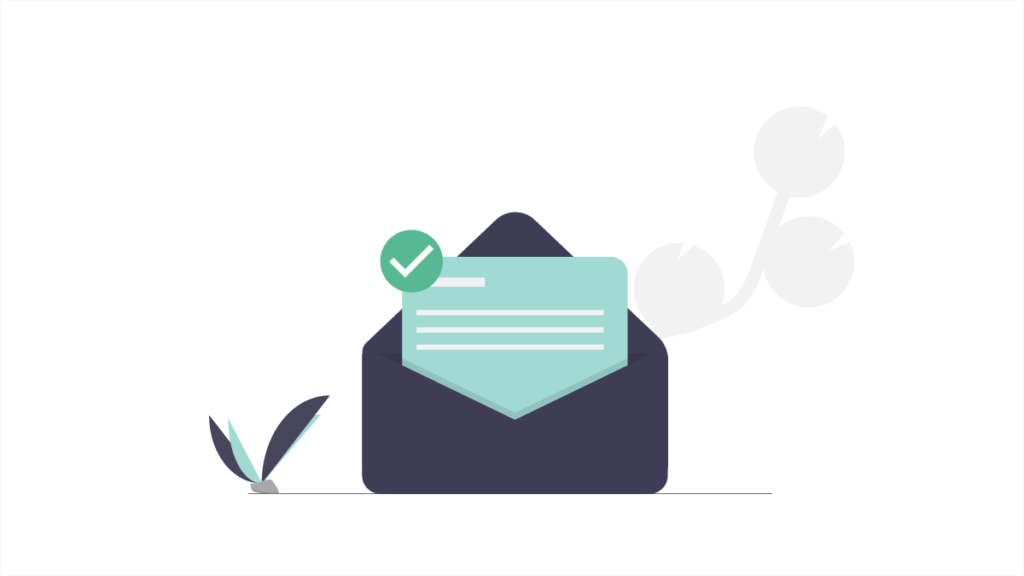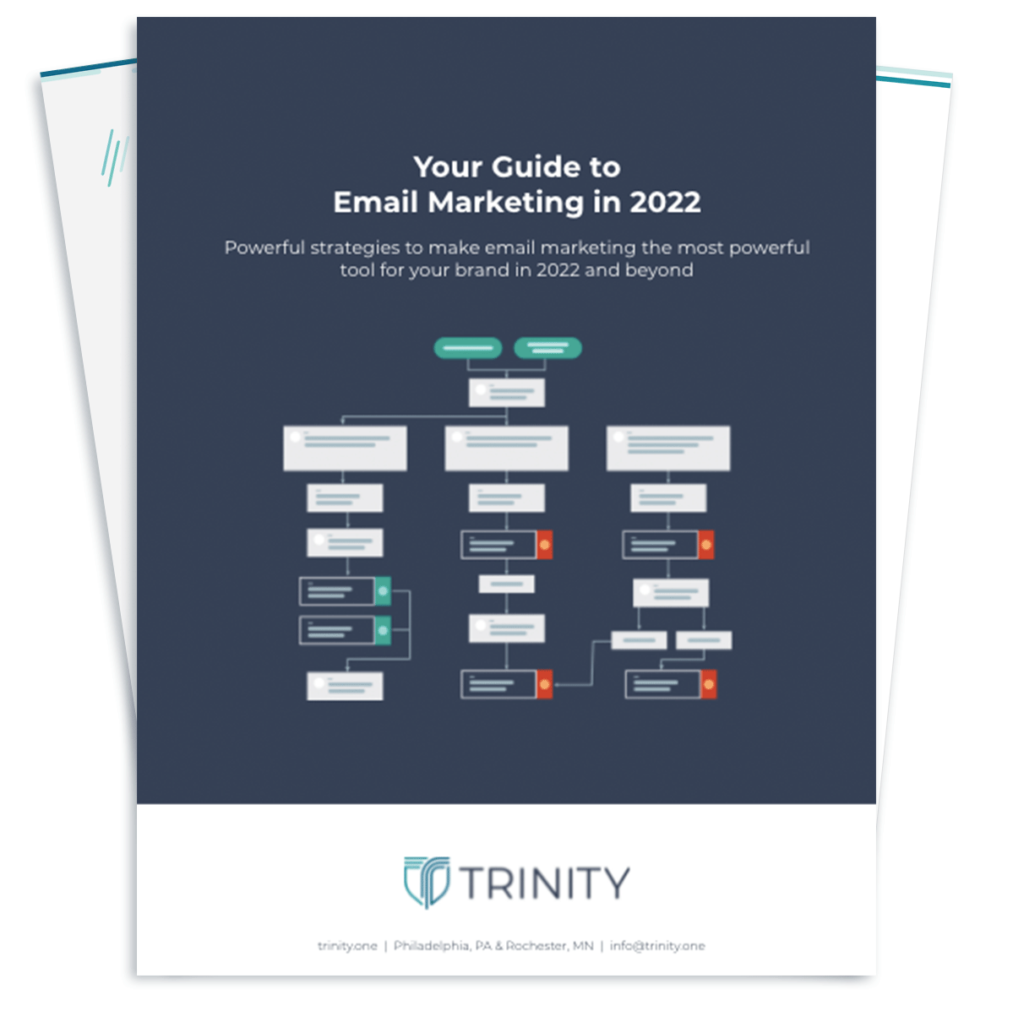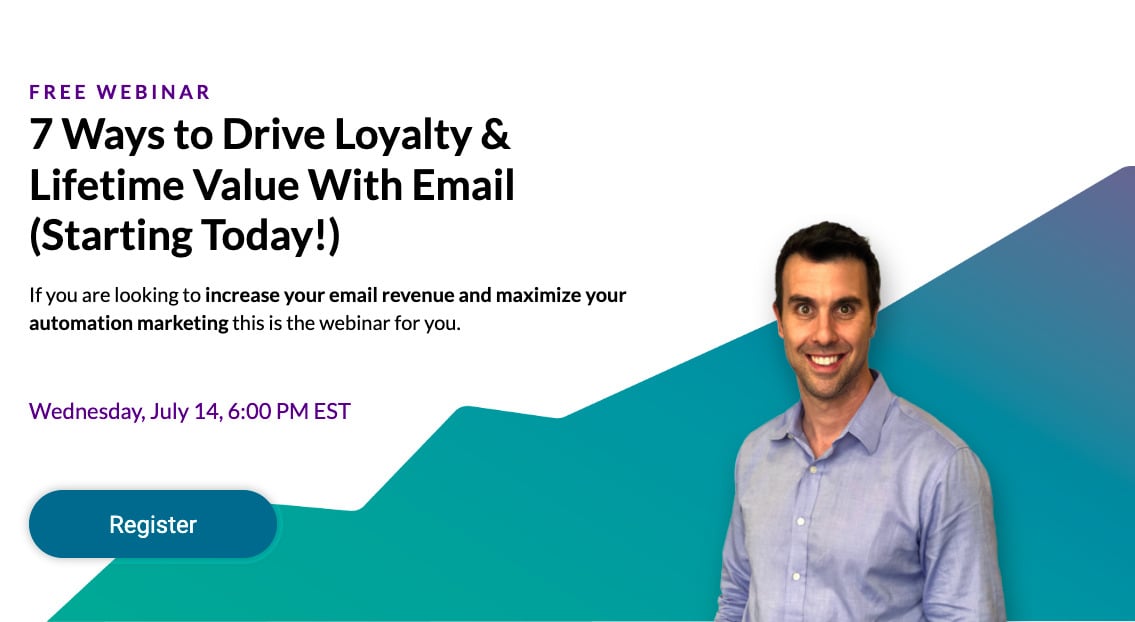Everything you need to scale email.
Welcome to our 2020 Guide to Email marketing. We created this guide to provide your business with the knowledge it needs to make email your top channel.
Let’s start with the fundamentals. Email marketing is governed by a set of iron-clad “best practices” that range from when you should send your email content to who you should send it to.
While these email best practices are often accepted at face value as hard rules, few marketers question their relevance in 2020 – or question whether certain common practices
Check out the top trends and ideas about email marketing that we discuss below. This data is valuable and well-researched, but the information also tells a deeper story about email marketing and provides insight that you can apply to your brand.
1. Email is not “Dying”
Email has moved beyond a marketing trend and has become a part of life – a utility akin to water or electricity. One of the main reasons “gurus” claim that email is a dying marketing tool is because they look at how young people communicate online. Teens and young adults often communicate via social media and chat apps, not email.
However, just because the average high school student isn’t drafting an email to chat with friends doesn’t mean this form of communication isn’t valuable in our day-to-day lives – or to your business.
Optinmonster shared just how universal email marketing is by breaking down email usage by age group. More than 90% of people ages 15-24 use email to communicate, and 75% of these youths say email is a “fact of everyday life.”
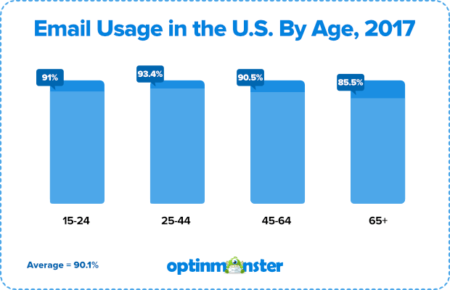
2. B2B Has the Upside
It’s a complete misnomer that the younger generations are responsible for the decrease in the popularity of email marketing. Marketers often assume that email isn’t “fun” or “cool” and instead invest in influencer promotions and other social media options.
However, teens and B2C brands aren’t the ones driving down email use. It’s actually the B2B brands – companies that could significantly benefit from in-depth email communication – that aren’t using this advertising channel.
According to Super Office’s 2019 State of B2B Email Marketing, which surveyed 4,494 email campaigns, 59% of B2B brands don’t use email marketing. The B2B brands that do only send out an average of one email marketing link once every 25 days.
When asked why B2B brands don’t use email marketing – or only send out monthly updates, they cite their customer sales funnels. As the Super Office team reports:
“Compared to more traditional consumer-facing marketing, B2B customers tend to have different buying motivations and the sales cycles can often take several months (or sometimes even years).”
Whereas a clothing brand can get away with sending daily promotional emails because of their short sales cycles, some B2B brands require months of meetings and contract negotiations to close a deal.

However, this doesn’t mean that these more complex brands can’t use email as a marketing tool. Email content can still serve as a valuable traffic driver (which can in-turn boost your SEO) and can continue to position your brand as a thought-leader in your industry. The results rely on your content just as much as your overall frequency.
3. Email Serves Top-Funnel
Marketers chase social media trends because of the chance for increased “exposure.” They tend to lean on their social marketing efforts as a way to reach new people and improve their top-funnel marketing strategy. However, studies have found that email marketing is also used as a top-funnel strategy.
According to Convince and Convert’s 2019 state of email marketing report, the primary objective of email marketing is to increase engagement (67%) and increase awareness (59%). Lead generation and conversion rate improvements trickled in underneath. This data shows how brands use email as a marketing tool, and where people find value for it in their sales funnel.
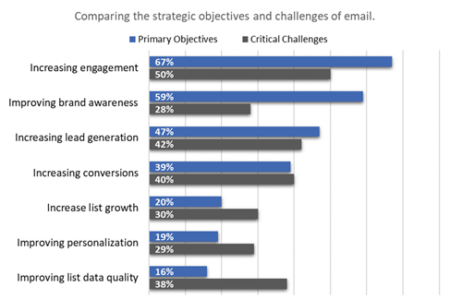
Now, it’s definitely worth digging a little deeper into these insights to see whether or not you should be using email marketing for top-funnel efforts. Gerry Murray of IDC Research has found that most B2B companies spend 50% of their budgets (or more) on top-funnel awareness-focused efforts. They’re so focused on gaining exposure and getting people excited about their brands that they don’t have a full-fledged marketing process in place to move leads down into the middle of the funnel to convert.
Murray expects to see a shift where brands change their investment to focus on lower-funnel efforts in order to better connect with customers. This is where email can help.
While email can be an awareness and engagement driver, you can also use your existing email infrastructure to flesh out your mid-level marketing tactics. Your brand can segment more advanced customers and create targeted messages that drive interested parties into the bottom of the funnel.
4. Email Will Likely Be Your Highest ROI Channel
One of the main reasons why email marketing continues to be a resilient form of advertising – even for brands that specifically market to younger generations – is because of its exceptional ROI. It’s estimated that for every dollar you spend on email marketing, you can expect to get $44 back in return.
Not only does email marketing have an impressive ROI, but it’s also fairly inexpensive for most brands. According to WebFX, the average mid-size business will spend up to 20% of their total marketing budget to email and recommend a target spend of 16% to maximize results.
Now, every business has different factors that impact the cost of their email marketing efforts. The size of your email list, your industry, your average ticket and target audience all dictate what levels of engagement and sales you can drive from your email efforts.
However, the data cited by WebFX isn’t an anomaly. Several studies have confirmed that most marketers can spend pennies per email and drive a large ROI for their efforts.
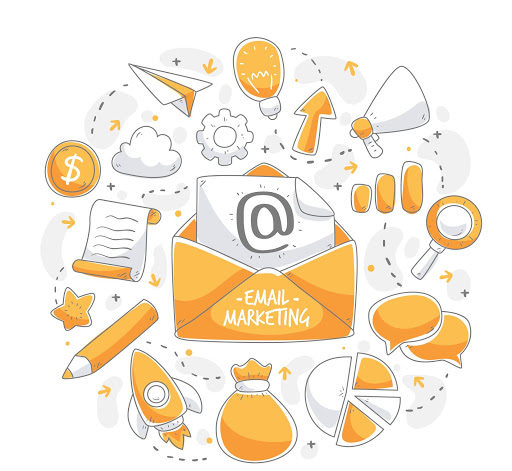
5. In Email – Less Is More With Words
While many outside factors will determine your levels of success as an email marketer, there is also much in your control. First and foremost, the design and content of your emails will determine whether your audiences look forward to what you have to say or quickly move your newsletters to the trash.
One factor to consider with your design is length. The team at AWeber analyzed more than 1,000 email messages and found the average marketer included 434 words per email message.
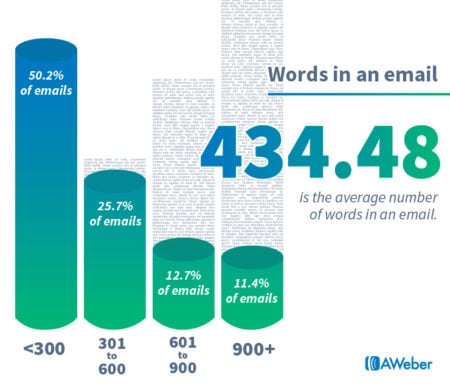
This is another statistic that you will want to dig further into. The vast majority of emails sent contain fewer than 300 words.
The logic behind this is simple: in a world where the average office worker receives 121 emails per day (via DMR) marketers want to get to the point immediately before customers lose focus.
However, the team at also AWeber talked to a few marketers who write 900 words or more per email. They found that these promotional emails focus on quality over quantity.
Instead of sending a dozen emails per week, the company sends one or two powerful newsletters that are packed with information.
Additionally, some brands don’t use emails as a tool to drive traffic to their websites. Instead, they include the entire article content in the body of the email for subscribers to read. Does this go against the best practice of linking to a post to drive traffic to your page? Absolutely. But does it work for these companies and bloggers? You bet. Sometimes breaking out of the mold is your best bet for email marketing success.
6. Avoid Unsubscribes With Relevance
While most customers accept emails from brands as a given when interacting with them, more people than ever are reaching for the unsubscribe button when the email promotions aren’t what they expect.
Adobe reported that 33% of consumers say they will unsubscribe if the brand isn’t promoting something that they are interested in buying.
These unsubscriptions are the result of expected personalization from brands. A study by The Harris Poll of 3,000 consumers found 63% of people expect personalization as a standard of service when receiving promotional offers.
Furthermore, more than half of consumers (54%) are willing to share personal information with companies in order to receive better offers. In this era where personal information is a currency akin to oil, more consumers are taking control of what they want to see and what brands are allowed to know about them.
Brands that ignore this agreement and take the information without providing a better consumer experience risk alienating customers and quickly having their trust revoked.
In fact, the most frustrating experiences for customers include receiving promotional ads for items they have already purchased or when a brands fail to recognize them as existing customers.
Simply put, don’t ask your loyal customers to join your rewards program if they are already members. You won’t get the ROI you want and you will annoy your highest-valued buyers.
7. Open Rates are Up but Click-Thru Rates are Down
There are additional studies that reinforce the idea that consumer behavior toward email marketing is changing.
According to SendGrid’s global engagement email benchmark survey, open rates have increased over the past few years, but click-thru rates are lower.

The team at SendGrid cites a few reasons for these changes. Primarily, they point to email as a tool for receipts and confirmation messages – from Uber rides to fast food purchases – which now arrive via email. These messages count as brand emails, even though they really only provide documentary value for the customer.
Additionally, the SendGrid experts believe that customers have become more discerning over what they spend their time on. A customer might open your email if they like your brand, but won’t hesitate to delete it if they aren’t interested in the content. This, again, shows how a lack of personalization will hurt your brand.
8. AI is Becoming Invaluable for Email Marketing
If a small business spends $9 per month to manage their email efforts, how can they be expected to develop advanced personalization strategies and follow trends that multi-million companies immediately adopt?
The answer lies in artificial intelligence. Most off-the-shelf AI tools are free for basic packages or only use a small upcharge for advanced features. In fact, many email providers already utilize AI within the back-end of their products.
“Humans simply cannot replicate [the] degree of constant learning and optimize at the same pace [as AI],” Kyle Henderick writes at MarTech. “It would take a significant amount of A/B testing to eventually determine the most effective content, frequency and offers for each individual subscriber…the right AI tools have the potential to do this in seconds, freeing up email marketers’ time to think more strategically.”

As we will discuss later in this guide, no one person can handle the amount of personalization that your customers expect. An AI tool, whether it is added separately or built into an email service, will help SMBs better reach their goals without burning out their marketing team on menial tasks.
9. Expect Never Ending Change
We learn more about email marketing and customer behavior every year. Our technology also improves in ways we couldn’t imagine two years ago.
While marketers are better prepared and better informed to send effective email messages, customers are moving targets. Your buyers continue to evolve in their expectations of your brand and what they expect from your sales efforts. This means that no company can ever rest on its laurels and feel comfortable in its “best practices” because these practices are constantly changing.
In 2018, Google announced its plans to make email more interactive with its AMP support. This means that emails can update in real-time with dynamic content that engages the user. A travel site can change which hotels it promotes based on availability and a retailer can update its deals with the latest items.
Considering 26% of all emails are opened in Gmail, this investment is a huge change for email marketers. Interactive content and improved email automation is the future, and customers will continue to expect it from smaller businesses the more they see it in top brands.
Best Practices for Email Design
As you plan to grow your email marketing campaigns (or at least branch out from what you traditionally do) in 2020, your team should use this planning time to upgrade your email design and make your messages more compelling.
There are countless email marketing design guides across the web, with countless checklists that readers are expected to follow. As you read these, take them at face value and test them within your own campaigns. What works for one brand might not work for another.
That being said, these are a few proven design strategies that have worked for multiple brands in the past and have a proven track record. We recommend them as a good place to start as you evaluate your email designs in order to create more engaging content.
Note: many free or low-cost email providers will provide email templates that you can use. There are also dozens of free templates online. If you choose this option for your design, test different design options, or test the content within the designs, to see how your customers react.
QA Email Display on Multiple Devices
More than half of all email messages are opened on mobile devices – a number that is expected to rise over time. Not only should your email design be mobile-friendly, but the call-to-action that you include should also be large, prominent, and navigable. Few people who click on a link are going to be happy with a tiny screen that was meant for a desktop viewer.
Salesforce created a fascinating infographic that shares the exact CSS width and height for popular mobile devices. While many email providers (like MailChimp or Constant Contact) will adapt messages to fit various screens, it helps to know what your email content looks like on mobile so you can make adjustments for your target audiences.
To get the most out of your mobile optimizations, turn to Google Analytics and find the top devices that your customers browse from.
Below is a quick screengrab from the Devices subhead of the Mobile section (under Audiences) in Google Analytics. In this case, the company can see that as long as their email messages look good on an iPhone, they can create a positive mobile experience for at least half of their customers.

Know the Data Behind Subject Line Performance
Subject line advice is something that dozens of marketing experts will offer, but your actual best practices should be based on a combination of data and first-hand experience with your specific brand.
Too many people stick to a set limit on subject lines because they “heard it was recommended at a conference,” or “read about it in an article somewhere.” However, you may find that longer subject lines work better for your brand, or that your customers feel strongly about emojis one way or another.
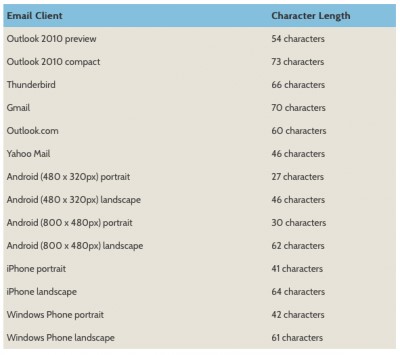
Using this data, you can develop your own email subject line best practices to accommodate your customers. For example, you could develop guidelines where your subject lines are less than 60 characters to account for both Google and Outlook readers.
Alternatively, you could say that the core message needs to be addressed in the first 30 characters regardless of how long the subject line is. These rules are based on fact, rather than what a conference “email guru” recommends.
As you develop your subject lines, also look into the “pre-header” or snippet that most email providers display. This is typically a short sentence elaborating on the body of the email beyond the subject line. Testing these snippets as well can help you improve your open rate and overall engagement.
Humanize Your Email Marketing
Even if you are setting up automated triggers for various customer actions, look for ways to add a human touch to your email content. Remember, an inbox is part of a person’s online home – alongside their social media channels and other communication tools.
If you’re approaching customers with stiff or cold content, they aren’t going to welcome your brand or look forward to what you have to say. There are multiple ways you can humanize your email marketing – even if your brand isn’t particularly engaging. The following are a few options you can consider including:
- Give the sender an actual name, not just [email protected] or [email protected]. Even if the customer knows that the email is automated, this small step helps them picture a person behind the message. Don’t forget to sign off your emails with this name.
- Ask questions and have discussions in your email content. You don’t need to exclusively make statements and give calls to action in your email body.
- Provide multiple options for customers to choose from. This removes the pressure to take action and lets your customers consider their best choice.
- Use the first and second person. A sentence like “We are launching a new way for you…” is much more personable than a formal “ABC company is launching a new way for customers…”
Above all, talk to your customers as if you are speaking with them on the phone or in person. You can still send professional emails without speaking to your clients in corporate jargon.
For reference, a writer at the Harvard Business Review created a “Bizspeak Blacklist” that highlights words or phrases that put people off – whether you are trying to reach a B2C customer or sending a formal B2B proposal. Below is one of the graphics that they shared:
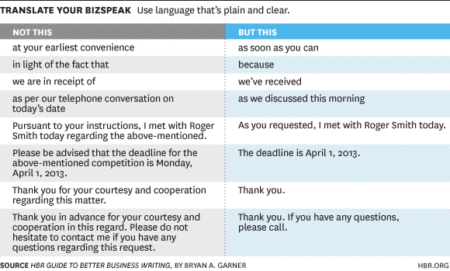
As you can see, a few small changes can really humanize your email efforts to help you form a personal connection with your customers.
Find High-Quality Photos That Add to Your Message
The internet is becoming increasingly image-heavy, from the rise in the popularity of Instagram to the constant reaction GIFs shared across Facebook and Twitter. With this, more email marketers are opting for email designs that also feature a large hero image to draw customers in. There are still some best practices that stand the test of time for choosing images and developing emails that benefit your brand.
Constant Contact analyzed the number of images in email bodies to try and find the sweet spot. They found that less is more, and too many images can actually put off customers.
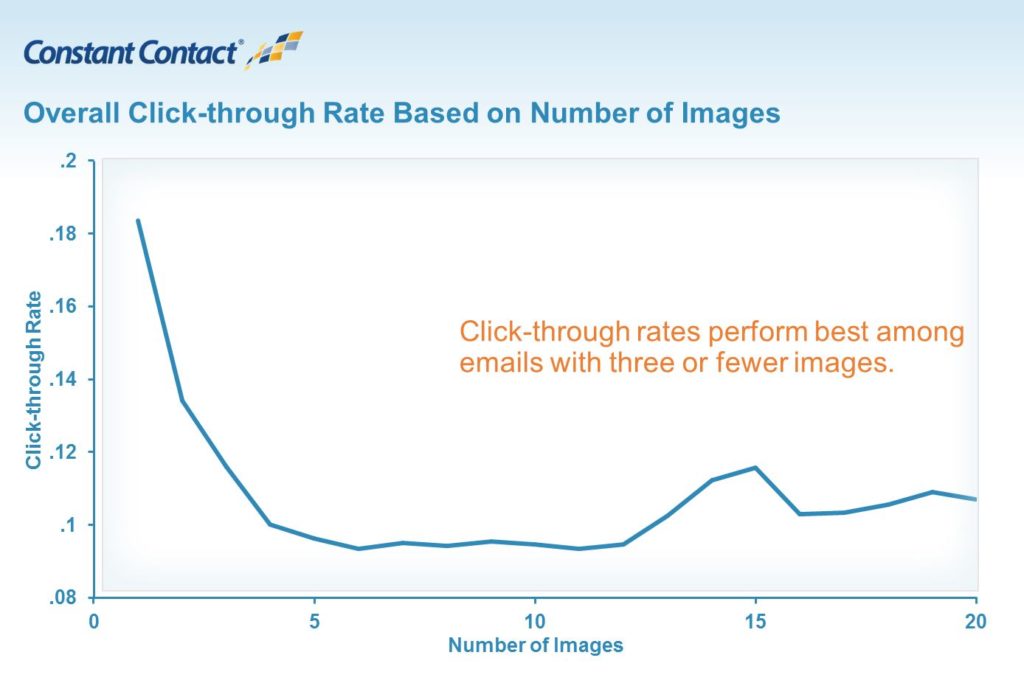
When you think about it, these results likely have to do with brand messaging. If your email is packed with four or five (or more) messages, then your customers will get confused by your various calls to action and goals.
However, leading with one clear message – often in the main image – with only one or two supplemental images to support it, can guide customers to take the action you want.
For eCommerce brands, the image-heavy email trend is exciting. Ecommerce companies can develop email campaigns with bright lifestyle images featuring specific products to drive sales.
However, finding and using engaging images can cause stress for lead generation companies or brands that don’t have as much visual appeal as, say, Tiffany & Co. or Disney Cruise Lines.
For these brands, consider investing in a stock photo subscription instead of pulling free images on the web. For example, below are a few of the most common stock photos used in the marketing and business world. If your customers are familiar with the industry, they likely will have seen these photos multiple times on various blogs and will gloss over your message.

Investing a few dollars per month to buy quality images, or contracting a designer to create them, can drive better email marketing results and help your brand stand out from the pack.
Tracking the Success of Your Email Marketing Campaigns
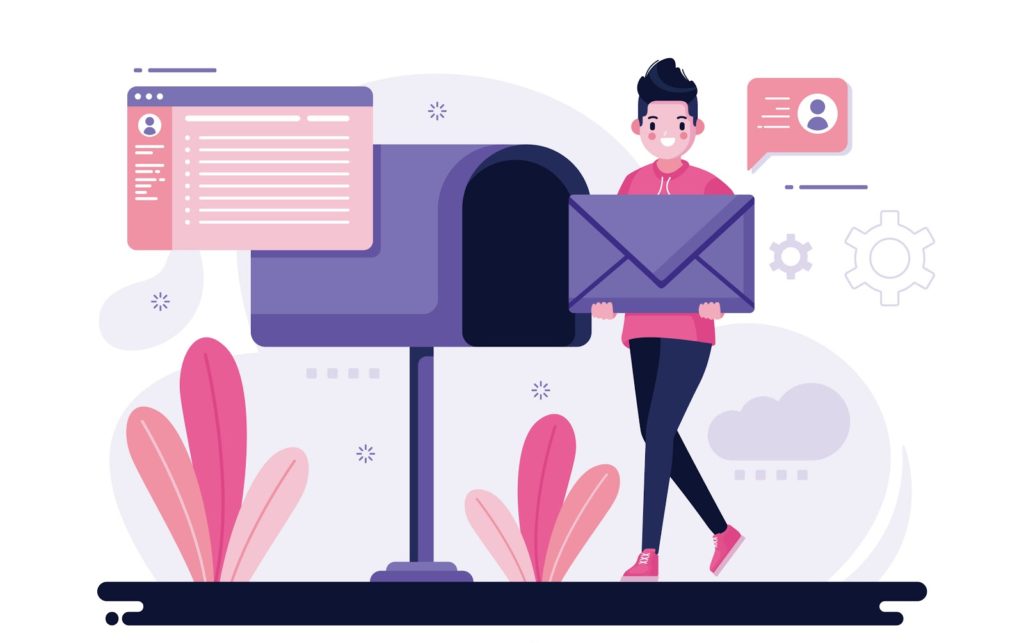
Oftentimes, marketers have been sending emails for several years but haven’t been tracking their performance or setting goals for growth. This creates the impression that email marketing efforts are stagnant.
How can you make improvements if you don’t know the current state that you are in?
As you begin improving your subject lines or hero images, take baseline metrics and set goals for growth. Through this process, you may discover that some insights you currently track are more valuable than others.
Know Which Metrics to Track
Before you can dive into some of the more advanced practices for tracking and improving your email marketing campaigns, it helps to review a few of the top metrics that you can follow to better understand your performance. Even seasoned marketers can gloss over their email insights and miss valuable opportunities and warning signs in their data. Some of our top-recommended metrics include:
- Open Rate (OR): this refers to the percent of people who actively opened your message out of those who received it. A high OR typically means that the subject line was effective in encouraging customers to view the message.
- Click-Thru-Rate (CTR): this is the percent of people who clicked on the links in your message after viewing it. Similar to the OR, a high CTR shows that the content was valuable and customers want to take action to buy or learn more.
- Clicks-Per-Link (CPL): this provides insight into how customers view your email body. Of the various links you include in your email, CPL shows which ones get clicked on the most. For example, if 95% of clicks come from the top message, then you might not even need additional sections throughout your email.
- Time Spent: this metric is measured in minutes and seconds. The more time spent looking at your email, the better. A high time spent metric is particularly important if you have a long-form email message with several paragraphs of content.
- Conversion Rate (CR): the percent of people who buy a product or fill out a contact form because of the email.
- Return on Investment (ROI): the amount of profit that comes from an email compared to the cost. This can be viewed on an email-level or campaign-level scale. For example, if a brand pays $200 to send four emails around a specific campaign, which results in $5,000 in sales, then the ROI $25 for every $1 spent on marketing. This is also often viewed as a percentage.
Many email providers also provide insights into negative responses to your email campaigns. These include metrics like spam reports, unsubscribe rates, and inactive customers.
Your goal is to keep these numbers low by providing high-quality content and marketing to customers who are already interested in your brand. You can also avoid getting flagged as spam by following the FTC’s clear guidelines on email advertising.
Avoid Vanity Metrics
There are several metrics you can track as you develop your email campaigns; however, we always encourage marketers to avoid vanity metrics that fail to paint an accurate picture of email marketing performance.
For example, email reach doesn’t tell you much about your campaigns. Your email messages reached 10,000 people? Great. But how many people actually opened the message and read it? How many sales came from those 10,000 emails sent?
Email frequency offers similar vanity results. The number of emails you send does not reflect how effective they are. In fact, many brands have increased their email marketing success by decreasing their frequency and reaching smaller audiences. This is because they were able to segment their customers and reach the right people at the right times, instead of mass-blasting everyone as often as they could.
Use the Right Tools to Track Your Progress
As you look at the various metrics made available to you, consider the source of the information. While an email provider might be able to provide interesting details about your campaigns, you may need additional information if you want your overall efforts to increase their effectiveness. A few of the top analytics sources we recommend include:
- Google Analytics: at face value, you can cross-check the data that your email marketing provider says with what Google picks up. Klaviyo, MailChimp, and other tools often work well with Google, but you can get other insights into how email-driven customers behave on your website compared to your other marketing channels.
- A/B Testing Options: you can upgrade your current email marketing provider to include A/B testing tools or invest in a specific one for email. A/B testing allows you to directly choose a campaign and choose a “winner” based on the data. You can also turn around and pit the winning email against another design. While you can conduct your own A/B tests with your existing campaigns, it will be harder to compare specific results or make minor changes that you can track.
- Heatmap Tools: look for email providers that offer heatmap readings or find additional tools that “read” your emails for you. This provides a first-hand look of how customers see your emails. You may notice that their eyes aren’t drawn to the main message that you are trying to push out.
All of this isn’t to say that you should ignore the metrics provided by MailChimp or whatever email tool you use. However, by tapping into multiple sources, you can get a clear view of how your marketing efforts are doing.
Automated Email Marketing for Lead Generation Websites
Email marketing can be automated within a variety of industries and for multiple purposes. For the sake of clarity, we are going to look at email automation from a lead generation perspective, and then address automation opportunities for eCommerce. While eCommerce sites tend to use email marketing as a way to close sales with targeted offers, remarketing, and abandoned cart messages, lead generation brands have a longer sales process and need to use email differently.
For lead generation (which are often B2B) brands, the marketing goals aren’t as simple as driving customers to open messages and make purchases. While automated email promotions are still valuable for lead generation brands, marketing managers need to be more strategic with their efforts.
Prospective Customers Trust You With Their Contact Information
The start of your email marketing process begins with your contact form – or whatever method you use to collect leads or customer emails. When a person hands over their email address, they are inviting your messages into their inbox. Keep this in mind during the collection process and as you develop an email marketing strategy around it. For example, below are a handful of ways brands collect leads to grow their businesses:
- They gatekeep valuable content (whitepapers, ebooks, reports, etc.) and require customer contact information as a form of payment in exchange for access.
- They develop pop-ups encouraging customers to subscribe to get valuable insights and content directly in their inbox.
- They meet with people at conferences, trade shows, and networking events, where the emails are then added to their database for promotions.
The method that you use to collect email addresses will tell you a lot about what type of content that your leads want to receive. You can easily tell what topics they are interested in and even where they are within their organizations depending on the type of contact form that you have.
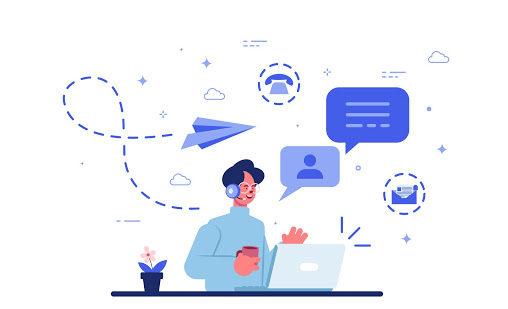
(While best practices encourage companies to use short, quick contact forms – a practice we agree with – you can determine a lead’s estimated job title, or place within the organizational structure, based on the type of conference where you met them or the resources they gain access to.) Either way, your brand has the opportunity to turn every email address you collect into a prospective customer and work those leads down the sales funnel. In this case, your digital content or conference presentation serves as the top-funnel marketing tactic, and email will step in to fill in the mid-funnel gaps.
Prospective Customers Trust You With Their Contact Information
The start of your email marketing process begins with your contact form – or whatever method you use to collect leads or customer emails. When a person hands over their email address, they are inviting your messages into their inbox.
Keep this in mind during the collection process and as you develop an email marketing strategy around it. For example, below are a handful of ways brands collect leads to grow their businesses:
They gatekeep valuable content (whitepapers, ebooks, reports, etc.) and require customer contact information as a form of payment in exchange for access.
They develop pop-ups encouraging customers to subscribe to get valuable insights and content directly in their inbox.
They meet with people at conferences, trade shows and networking events, where the emails are then added to their database for promotions.
The method that you use to collect email addresses will tell you a lot about what type of content that your leads want to receive. You can easily tell what topics they are interested in and even where they are within their organizations depending on the type of contact form that you have.
(While best practices encourage companies to use short, quick contact forms – a practice we agree with – you can determine a lead’s estimated job title, or place within the organizational structure, based on the type of conference where you met them or the resources they gain access to.)
Either way, your brand has the opportunity to turn every email address you collect into a prospective customer and work those leads down the sales funnel. In this case, your digital content or conference presentation serves as the top-funnel marketing tactic, and email will step in to fill in the mid-funnel gaps.
Use Lead Generation Tools to Improve Segmentation
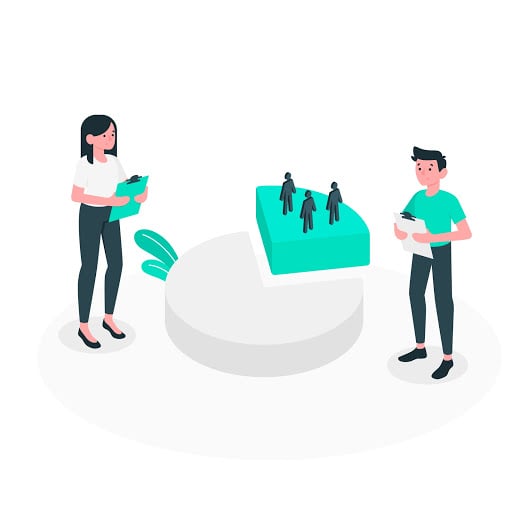
The first step in turning your collected customer information into leads is clear segmentation. Lead generation websites have so many options to segment customers and have more information available to them than they realize.
You don’t need to know someone’s specific salary or location in order to segment them effectively. Instead, use a combination of user-behavior analytics that can be paired with what you already know about the customer.
Consider the information you pulled from the previous section in your (short and sweet) contact form. You can glean a variety of insights that determine how to segment your customers. A few of these include:
- The main topic of focus
- Biggest pain points
- Job title (or estimated job title)
- Email frequency expectations
- Previous engagement with your brand
A new customer who lands on your website from an organic search listing might give you their email address in order to access a whitepaper, but they are also less likely to engage with your email content than a returning visitor who signs up for your newsletter directly. These behavioral cues can help you form audience buckets where some leads receive more frequent email communication than others.
Consider the lead generation website of a wellness center. A customer who visits pages related to homeopathic treatment will likely be interested in content related to natural medical care. Meanwhile, a lead who you met at a sports medicine conference is more likely to want content related to athletic performance and longevity. This isn’t to say that every athlete isn’t interested in homeopathic medicine, but simply that you can find content that your leads are already interested in to turn their curiosity into conversions.
Additionally, these segments aren’t set in stone. While you may send a customer a few emails per month to gauge their interest, you could increase their frequency based on their user behavior.
Segmentation tends to be the easy part of email marketing automation for lead generation brands. Many email marketing tools allow brands to segment audiences, and small business owners have been sorting leads from conferences and meet-ups for years.
However, modern email marketing tools bring a machine element to these efforts. While you might set up a few buckets based on user interest or behavior, your AI tools constantly review and rate email contacts based on their behavior.
For example, through automation, your tools can move prospects who aren’t engaging with your brand into a different list and then market to them with a more compelling offer. They can also highlight highly-interested leads and work to move them deeper into the sales funnel.
Not only does AI make segmentation easier, but it also increases the effectiveness of your marketing campaigns. MailChimp reported that when lists are sorted by subscriber activity, open rates are 10% higher than unsegmented campaigns and clicks are almost 16% higher. The content is more relevant, which grows your overall marketing ROI as you lose fewer customers in the mid-part of your sales funnel.
Identify Leads that Are Ready for the Next Step

When the burdens of segmentation and content creation are removed from your sales and marketing teams, your employees have more freedom to pursue qualified leads and turn them into sales. Marketing email automation can help with this part of lead generation as well by identifying top prospects that might be interested in a personal message by one of your team members.
The goal of automation is to free up time and energy, while the goal of AI is to increase the efficiency of your efforts. You should have a list of highly-engaged leads in your marketing list that your email marketing tools developed. These are the leads that are ready to be moved into the bottom of the sales funnel. It’s now up to your team to develop a plan to engage with these potential customers on a deeper level so you can close the deal.
As you can see through these steps, email marketing is an invaluable mid-funnel tool. The 59% of B2B brands that don’t use email marketing are losing out because they don’t have the proper tools and infrastructure in place to turn interested shoppers into potential buyers – or they were so focused on email as a top-funnel strategy that they misused the tools they were given.
The right automation and machine learning systems can turn email marketing management into a strategic, high-level role, rather than an entry-level content or organization job.
Automated Email Marketing in Ecommerce
Automated email marketing for eCommerce follows similar sales funnel and segmentation processes as its lead generation counterpart. However, the main difference is that email collection often comes from customer purchases on the eCommerce side. If a customer visits your website for the first time and provides an email address, you can ask if they want to opt-in to future offers and become loyal customers.
Similarly, while lead generation emails can be more structured, eCommerce automated emails are often based on behavioral triggers. These can be as simple as a customer looking at a few products or could be more complex as you try to bring buyers back into your sales cycle. We will be looking primarily at different types of triggers for automated eCommerce emails and how effective they are for your brand.
Abandon Cart Messages
Abandoned cart emails are some of the most common email triggers that eCommerce brands add to their automated efforts. The premise is simple: a customer added an item to the cart but didn’t buy it. Your goal as a marketer is to bring them back to complete the purchase. Your customer is just short of the finish line, and an abandoned cart email can push them over it.
Abandoned cart emails are incredibly effective, and there’s data to prove it. According to Moosend, abandoned cart emails boast a 45% open rate, with some brands seeing a 50% click-thru-rate and 50% conversion rate for those who clicked. These are unprecedented levels of engagement and highlight how motivated customers are to buy.
These abandoned cart insights continue to prove that email marketing is not exclusively a top-funnel marketing tool. These emails are deep into the bottom of the funnel, and brands that continue to invest in awareness or engagement are missing out on converting this low-hanging fruit.
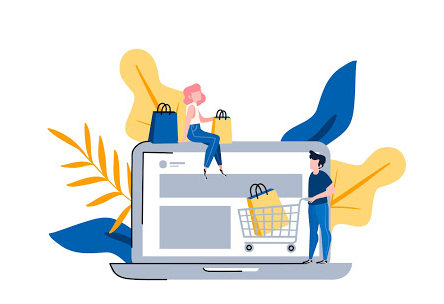
Changes in Price or Shipping
Updates to prices or shipping costs serve as a form of abandon cart content, at least for customers who never actually added items to their carts. These emails create a sense of urgency for your customers. If someone looked at an item but didn’t buy, why should they return and complete a purchase? These automated email triggers address this.
Look to Expedia as a strong example of a brand bringing customers back with relevant price changes. They will send alerts for hotels that customers looked at, along with price changes for other hotels in the area. People are highly price-sensitive when buying travel services, so a change of a few dollars can have a significant impact. Did the hotel you casually browsed yesterday drop its prices? You better return and book quickly before the prices go up again.

If you can’t change the price of items, your brand can continue to create a sense of urgency by updating shipping information or sharing updates when there is a limited supply of certain items left. The goal is to turn a customer’s “someday” into an immediate “today.”
Upsells or Cross-Sells
Once your customers return to your website and convert, they enter the buying cycle again. Because they are repeat customers, your brand can spend less time with the top-funnel awareness aspects of brand promotion and focus on specific items that drive customers to spend more. In some cases, restarting the sales cycle means encouraging a completely new purchase (like another pair of shoes or more dog food). However, the sales cycle can also grow to expand upon existing purchases.
This is where upselling and cross-selling comes in:
- Upselling encourages customers to pay more for a better product or service.
- Cross-selling pairs items that the customer might find valuable.
Consider the eCommerce branch of a cruise line or resort as an example. The cruise line can encourage customers to upgrade their rooms for more space or a better view. Not only are these upgrades more profitable for the cruise line, but they also open up lower-cost rooms to sell to customers who are still on the fence when booking.
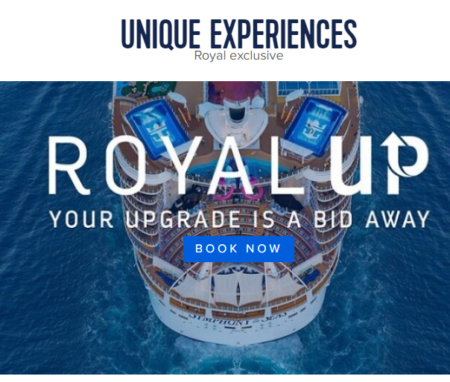
Along with room upgrades, the same cruise line might cross-sell customers onshore excursions and spa treatments to enhance their trips. These additional add-ons might have been overlooked during the check-out process, and the cruise line will work to convince customers that no trip is complete without them.
Upsells and cross-sells are used at all levels of eCommerce, from a dress company promoting accessories to a furniture store recommending mattress upgrades.
Related Items
If you are completely restarting the purchase cycle, use your automated email triggers to share related items that customers might want. Consider an eCommerce bookstore like Barnes & Noble for an example. The average person reads about 12 books per year, a statistic that varies widely with some people only reading a few while others read dozens.
An eCommerce store can sort customers by this frequency, promoting more books to fast readers while trying to engage slower-readers in genres they are interested in. Along with adjusting the automated email frequency, the booksellers can recommend related items based on past purchases. Someone who purchased The Shining by Stephen King might also be interested in It or Pet Sematary.

Naturally, the more your customers engage with your particular brand, the better you can promote related items that they would like through automated email promotions. Loyal customers will receive better recommendations simply because your eCommerce email system has more data on them. The smarter your system is, or the more data you have, the better your email marketing results can be.
Purchase Refills
Another way to bring customers back and restart the purchase cycle is with refill offers. Brands like Chewy and Amazon are strongly pushing the refill model, where customers can sign up for automatic shipments or are reminded when they need to buy more of the same item. Not only does this boost brand loyalty, but it also makes sales for these eCommerce retailers predictable. They know what items customers will want and can better predict their sales levels because of these refill-based shipments.
Consider the pet food and toy store Chewy. As long as your beloved dog or cat is alive, you will need to feed them. Few pet owners regularly change up their food. Therefore, it makes sense that most people would want 30-days worth of food to arrive once a month.
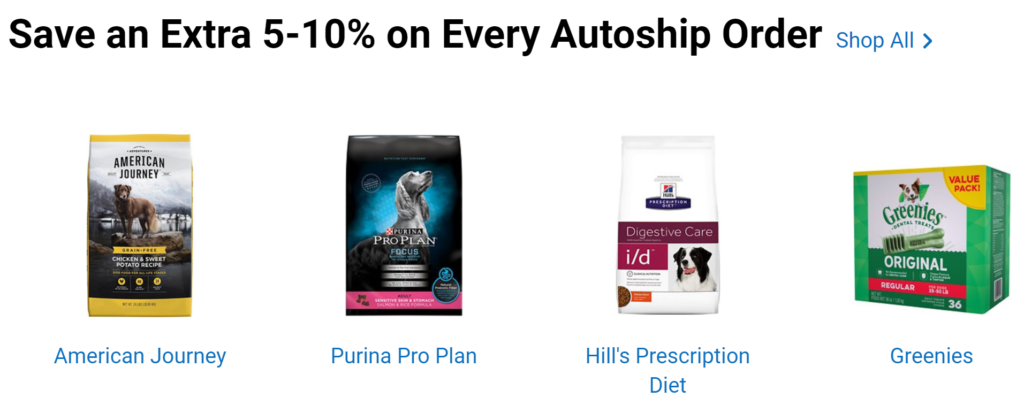
Even if you don’t have autofill options for your eCommerce store, you can still let customers know when it is time to enter the purchase cycle again. Planting the seed that they may be running out of certain items need to replace existing items can bring customers back to your site to browse or buy.
Should You Require Customers to Create Accounts?
While many automated email triggers are valuable to drive sales to your brand, they only work if you already have the email address of your customers. While you may collect email information during the checkout process for an abandoned cart email, what are you supposed to do for the other options?
This problem is why many brands encourage customers to create accounts when they go to buy a product, rather than creating a guest checkout option. Gatekeeping the checkout serves the same purpose as blocking an ebook for a lead generation website or setting up a contact form. However, some eCommerce professionals have pushed back, saying their customers don’t like the account creation requirement. So what does the data say?
The team at Moovweb found that conversion rates for customers who created accounts or had access to the guest check out were pretty much identical. If customers really want the product, they will create an account to get it. Interestingly, customers who log in spend an average of 10% more than those who are guests. However, these AOVs can also be explained by loyalty. Loyal customers and returning shoppers spend more. Customers who already have an account with your eCommerce site or create an account with the goal of returning are going to think more positively about your brand and will add more to their carts.
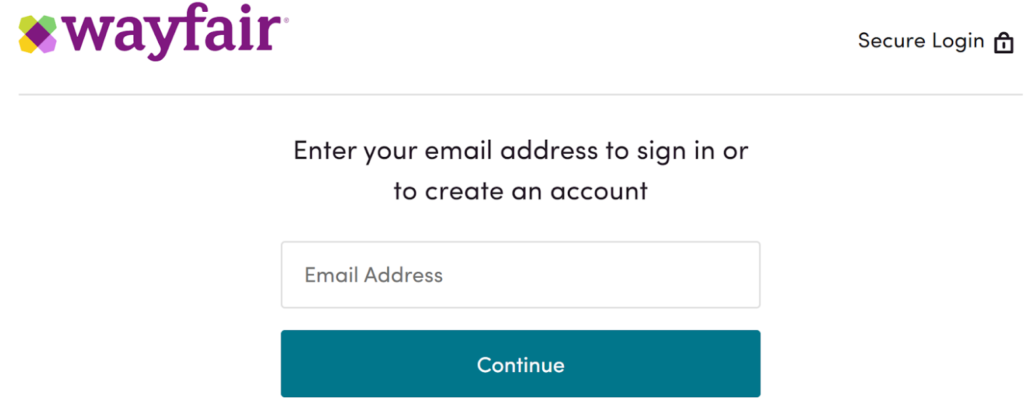
It’s up to your marketing team whether you want to allow guest checkout or require customers to create accounts – especially because every brand and customer base is unique. While you will collect more email addresses from customers by mandating accounts, your email list quality will likely improve if account creation stays optional.
Combining Lead Generation Best Practices with eCommerce Automated Emails
With all of these automated triggers and options, your email system will likely fire off dozens of emails throughout the day. However, it is important to keep in mind the best practices for email automation as discussed in the lead generation section of this guide. Abusing email frequency or relevancy is a fast way to turn customers into unsubscribers.
By finding an eCommerce-specific email automation tool, you can ensure that your customers aren’t overwhelmed by behavior-triggered messages while receiving too many off-topic newsletters. Segmentation and customer control is just as important in the eCommerce sector as it is for lead generation businesses.
Biggest Pitfalls to Avoid in Email Marketing
Like all digital marketing channels, email marketing comes with a list of best practices alongside a list of precautions. Many of the mistakes brands face with their email marketing are created because they don’t understand the resources required to successfully maintain an email marketing campaign and grow in the long run. Check out these top pitfalls – many of which tie into our earlier discussions on email marketing – so you can focus on growth.
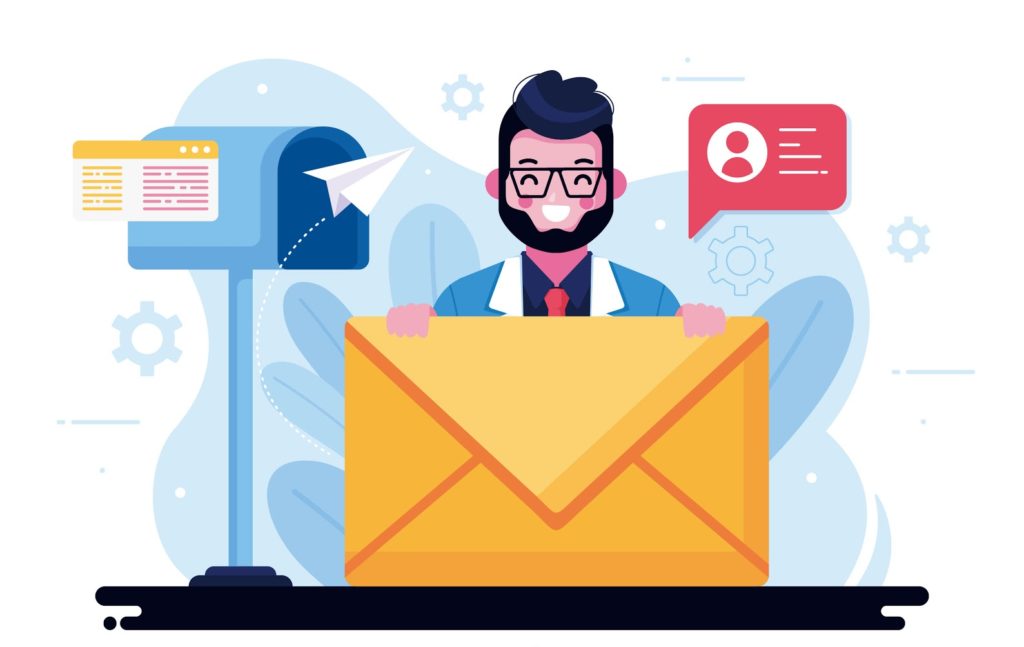
Don’t Get Lost in the Clutter
People spend more than a quarter of their workweek (11 hours) reading and responding to email messages, and the average person sends and receives 124 emails per day, according to Front.
This data only applies to work email messages. Most people then go home and check their personal emails (or respond to personal emails covertly in the office). Your competitors aren’t limited to the people your customers buy from, they also cover the 124-plus other messages fighting for your customer’s attention in their inbox.
In fact, the team at Front created an interactive chart where you can see how much time is spent checking emails. For example, someone who receives 50 work emails per day could have climbed Mt. Everest twice in the course of a year.
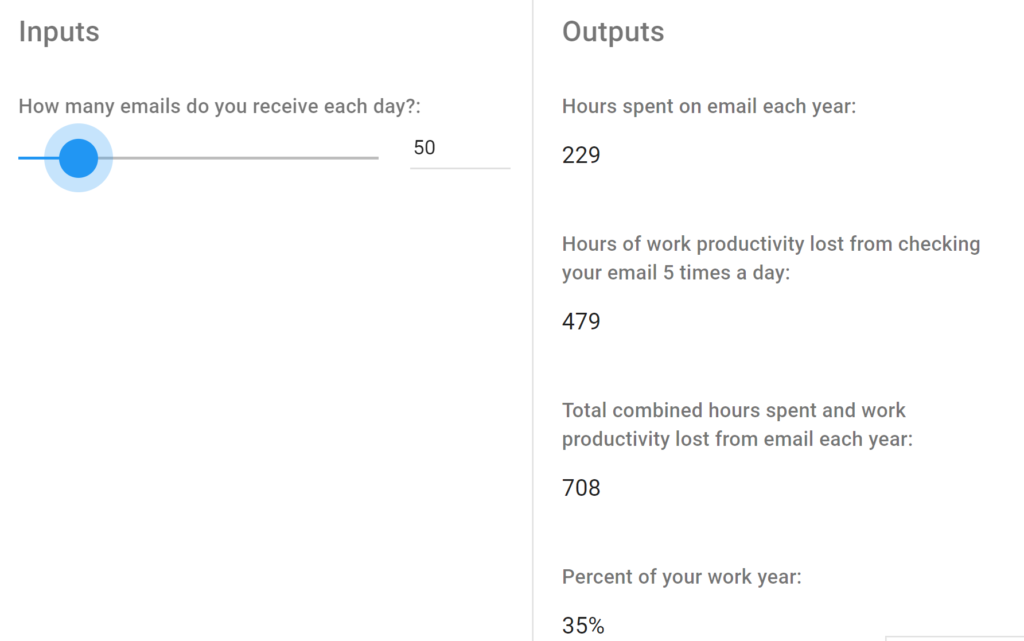
This data goes to show how easy it is to get lost in the hundreds of emails sent every day. Invest in your email marketing and work to improve your efforts so your brand can stand out. Working with a professional team or hiring a specialist in-house can make a big difference and will help you cut through the clutter.
Don’t Bury Your Call to Action
Not only do most people receive a large number of emails each day, but they also don’t spend a lot of time reading them. In fact, the same data from Front found that the average person spends 1.1 minutes per email. You only have a few seconds to grab the attention of your customers before they delete your message or move on to something else.
With this data in mind, remember to keep your message clear and simple. This is why most designs only feature one hero image instead of including multiple visuals and messages. These brands want to cut to the chase and highlight the most important information.
Not only should your message be clear, but you also need to offer a clear call-to-action – and keep it mobile-friendly. Large buttons and explicit commands will make your email content more effective and help your customers learn exactly what you want.
Accurately Invest in the Resources You Need
Too often, brands look at the relative affordability of email marketing and underinvest their resources. After all, something that only costs a few thousand dollars per month and can be automated doesn’t require much time, right? This is a common mistake. You still need graphic designers who are willing to jump in and help create new layouts, analysts who can identify which campaigns are working well, and strategic marketers to guide the whole process.
Your email marketing budget should not stop with your email provider – especially if you outsource your design services. You may have the right tools to send out emails, but those messages won’t be as effective as they could be.
Don’t Buy Email Lists to Boost Your Numbers
It’s understandable that you want a large list of email addresses to market your brand, but that doesn’t mean you can go out and buy email lists. Hubspot reports that while it is illegal to buy an email list, it is technically legal to “rent” them. Most email list vendors barely skirt the law to begin with, which could leave your brand in murky waters if you decide to go this route.
Not only is the act of buying emails illegal, but it also isn’t effective. You may have hundreds of addresses at your fingertips, but these people don’t know about your brand and probably aren’t interested in it. Plus, buying email lists proves that you’re keeping email as a top-funnel marketing tactic and will end up using your resources to drive awareness instead of conversions.
Build your email list the honest way, by providing value to your customers. This will also help you avoid following vanity metrics like the total number of people reached, rather than actual insights on what people think about your content.
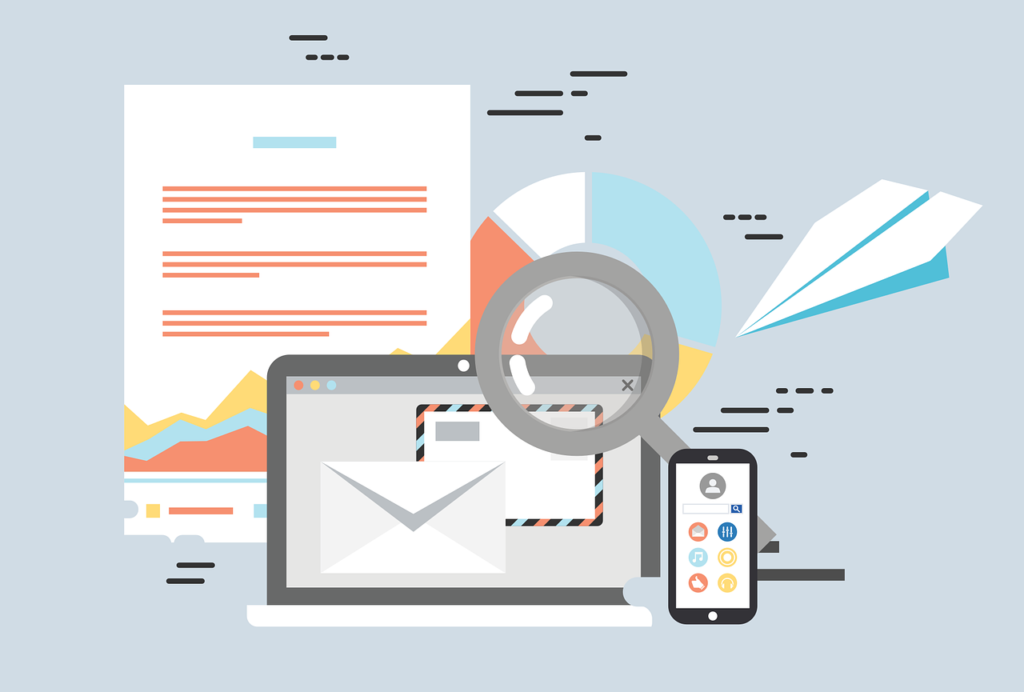
Respect Unsubscribe Requests
While we’re addressing FTC guidelines and what can or can’t be done legally, remember to address unsubscription requests. Follow the CAN-SPAM rules for allowing customers to unsubscribe and make sure they stop receiving messages when they don’t want them.
It doesn’t matter how big your email list is if half of the recipients flag your messages as spam and are frustrated with your brand. Plus, the hefty fines for breaking these violations will cancel out any profits that might have come from them.
Remember, there are other ways that customers can connect with your brand. For additional ways to instill trust in your customers through email marketing, check out the Periodic Table of Email Optimization and Deliverability by MarketingLand. They focus on topics related to improving the sender domain, authentication, and whitelisting to help marketers increase their chance of exposure.
Avoid Oversending Emails to Your Audiences
Throughout this guide, we have emphasized how your email marketing efforts will pack the biggest punch if they reach the right people at the right time. This often means sending fewer, but more targeted emails. Not only is this strategically important, but it also follows customer desires.
Check out the graph below by GetApp, which highlights exactly why people unsubscribe from email content. Almost half (46%) of respondents say they get too many emails from brands and unsubscribe to cut out the clutter.
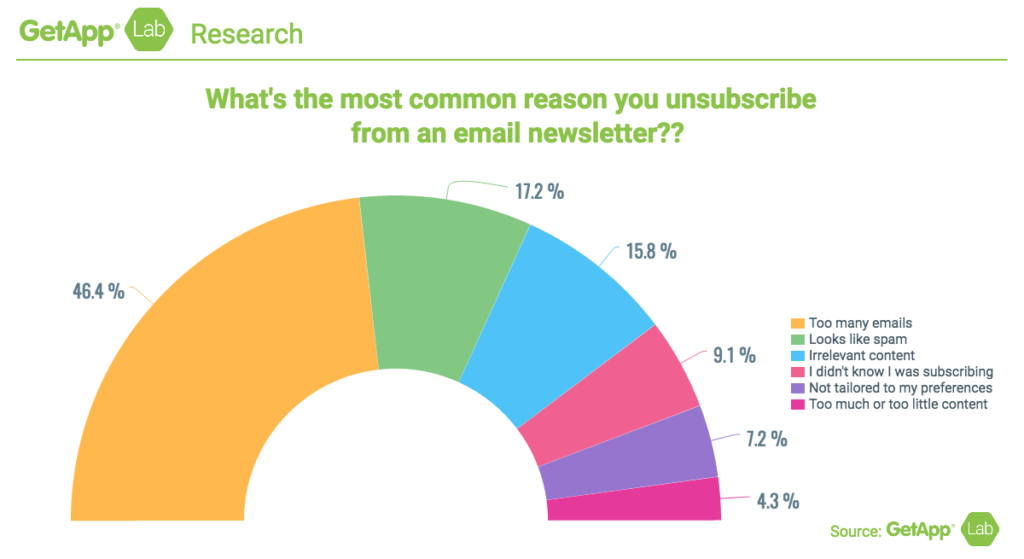
Don’t Fall Behind on Best Practices
Email marketing might be an older promotional option than other channels, but that doesn’t mean it’s not still changing and growing. If you’re not keeping up with the latest trends, then your competition will.
We discussed changes in AMP for email earlier this year. This will make email messages more interactive and allow customers to see content with updated information. For example, you can promote a sale on an item, and the sale price will change in the body of the email when you adjust it on the website. This reduces friction as customers see the latest prices and avoid confusion.
In the example below, SpaceX would be able to adjust the launch times as needed, without having to send out multiple emails and possibly confusing fans.

Sleeping on an update like AMP for email can limit your resources and knowledge about the email marketing field. Brands that stay on top of these updates can keep improving and growing their sales.
In the same way that you should avoid missing the latest updates and best practices, your brand should always strive to keep improving. Test new ideas, try new calls to action and learn how your customers respond. With all things digital marketing, you can never afford to rest on your laurels.
Your Checklist: 50+ Keys To Massive Results
Budgeting for Email Marketing
- Evaluate your email marketing provider. Is it time for an upgrade? Does your marketing software have the tools and features you need?
- Consider outsourcing your email marketing efforts. How much time will an outside contractor or agency save you? How much more revenue can an outside source bring in?
- Invest in graphic design resources. Existing email templates won’t solve all of your problems. If you lack the design skills to create engaging email content, then you may need help from a professional.
This guide has covered a lot of information, and it can feel like there are too many balls to juggle in order to keep your email marketing efforts effective, much less to advance them to grow your brand. With that, we developed a checklist that allows you to focus on specific elements of your email marketing and improve certain areas that may not be as strong as you would like.
Consider working through this checklist as a whole to improve your marketing efforts, or dedicate your time to just one section to see what an impact a few changes can make.
Determine Where Email Marketing Falls in Your Sales Funnel
- Consider when customers engage with your email messages within the buying process.
- Separate top-funnel with mid-funnel customers, content, and opportunities. You can also identify which messages will serve as bottom-funnel closers to drive conversions.
- Improve your top-funnel efforts to collect more email leads. Your email messages can then move customers deeper into the funnel.
- Introduce your email messages to customers. Let your segmented audiences know what types of content and frequency they can expect once they subscribe to your list.
Take Control of Your Analytics
- Familiarize yourself with the metrics offered by your email marketing provider. Identify any gaps in the information that you need.
- Set up Google Analytics. Highlight a few top metrics that are relevant to your email marketing efforts. You can also develop reports that will auto-populate to make analytics easier.
- Start tracking base metrics. You won’t know how to improve if you aren’t sure about your current performance.
- Reject vanity metrics. Stop tracking data points that don’t paint an accurate picture of your email marketing performance.
- Make sure relevant stakeholders have access to this data. This will allow your designers, managers, and content creators to work toward your goals for email growth.
- Invest in advanced data-tracking options. These include heatmap software and A/B testing tools to help you better understand your changes.
- Set monetary values on leads or improve your conversion tracking for an eCommerce site. This will help you better calculate ROI and see which efforts are more effective.
- Set up data check-ins to review your progress and set goals for growth.
Evaluate Your FTC Compliance
- Stop buying or renting email lists just to boost your numbers.
- Give your audience a clear way to unsubscribe from your messages. Make sure you actually stop emailing them when they unsubscribe.
- Evaluate other CAN-SPAM requirements. This includes having a legitimate physical address, an accurate “from” line, and a message of at least one sentence.
- Train your team on FTC compliance. This way everyone in your company is on the same page.
Update Your Email Layout and Design
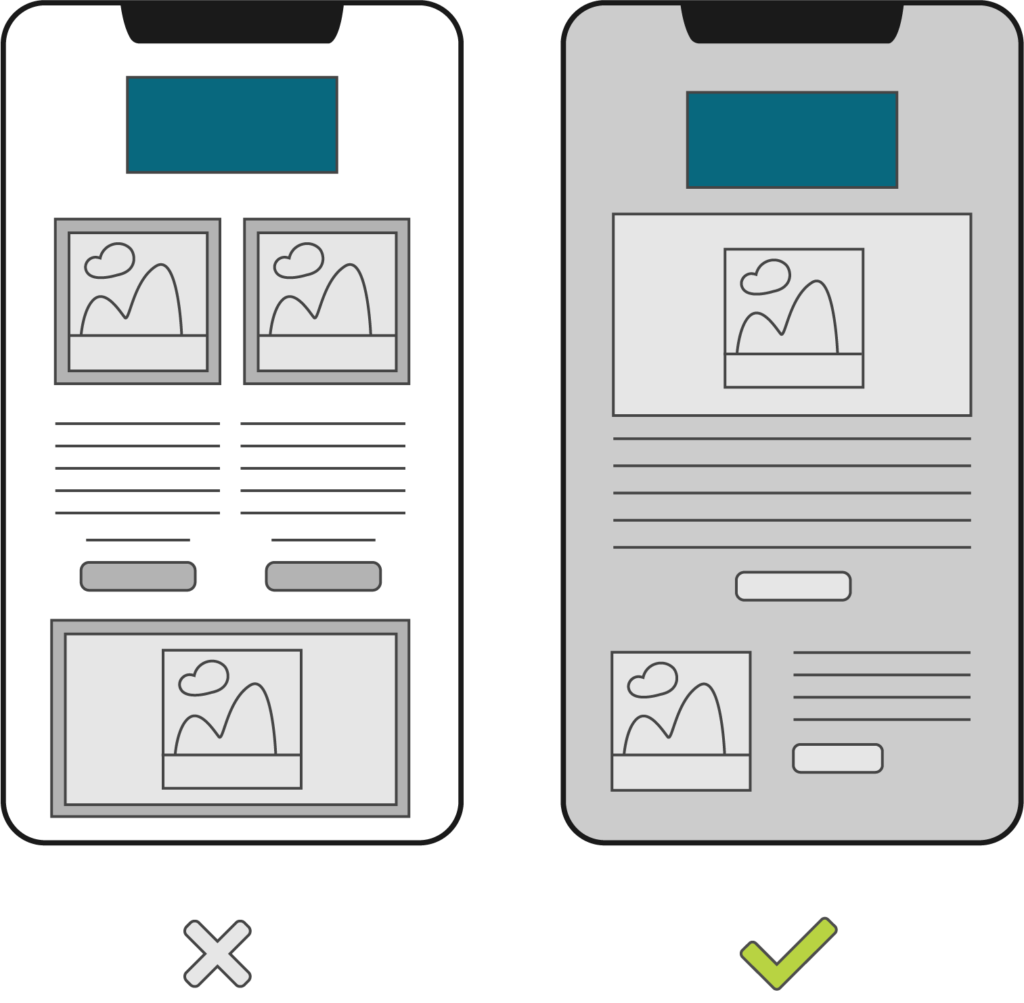
- Test different layouts and templates. Research free templates or use the suggested ones provided by your email provider.
- Determine the right number of images for your brand. Test using one “hero” image versus multiple images and links.
- Upgrade your stock photos. Invest in quality images that are different from your competitors – and everyone else on the web.
- Make sure your design is mobile-friendly. Identify the top screens that your customers use and test your emails on those devices.
- Ask for feedback on your design. First-person critiques can be just as valuable as data analysis and faster than heatmap testing.
- Test innovative options for your design. Look for interactive tools and AMP for email options for your brand.
Improve Your Email Content
- Set guidelines for subject line length. Most email providers show 40-60 characters before cutting off the subject line.
- Write engaging “pre-header” snippets. These short sentences can introduce the content of your email.
- Test different content lengths. Remember that the average email is less than 300 words.
- Experiment with the number of links in your email body. See which links get the most clicks and which ones are irrelevant.
- Create a clear call to action. Most people will spend less than a minute reading your email. Make that minute count.
- Place your CTA in different places. This will help you see where it is most effective.
- Humanize your writing. Draft your message using the first and second person. Even professional brands can be personable and engaging.
- Send your email from an actual person. Adding a name to your email is more personable than using generic address formats.
Reach the Best People With Segmentation
- Collect information through your contact form or checkout process. Automatically collect information from customers based on their website behavior and form information.
- Segment based on behavior, rather than demographics. Knowing where a lead is within the sales funnel is more valuable to your marketing efforts than their gender, age, or interests.
- Create specific audience buckets to develop content for. Build your marketing plan around your segmentation efforts.
- Look for tools that segment audiences for you. Your email provider might already do this, or you may need to invest in a more advanced tool.
- Let your customers segment themselves. Develop a preference center where your audiences can control what they receive and when.
- Let your customers adjust frequency and content. Reduce unsubscribe rates by giving people control over what kinds of messages they receive.
Streamline Your Efforts With Automation
- Develop email triggers based on user behavior. These include emails for abandoned carts, restocked items, discounts, and upsells.
- Prune your list to remove inactive emails. This allows you to focus on active audiences who are interested in your brand.
- Re-engage with lost customers. Try to reconnect with customers every few months to bring them back to your brand.
- Determine when you should bring loyal customers back to buy. Connect your email efforts with the customer journey to know when your customers are likely to come back and engage with your brand.
- Make your role more strategic. With email campaigns auto-generating content, focus more on developing a strategy for your email marketing and planning for growth.
Adjust Your Email Frequency
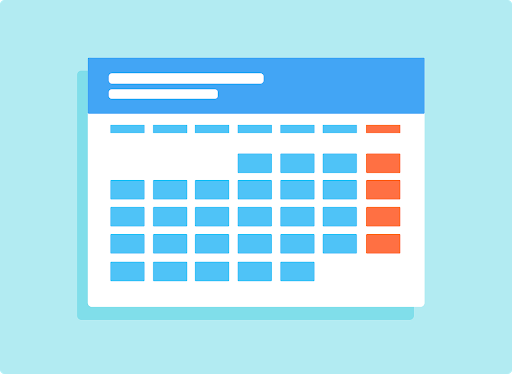
- Send fewer emails. It is better to send the right email to a targeted group of customers than to mass blast your whole list every day.
- Don’t overextend your resources. Email quantity is at an all-time high. Counter this with high-quality brand messaging.
- Avoid raising your unsubscribe rate. The top reason people unsubscribe is because the company sends too many emails. Learn the limits of your customers.
- Test different dates and times to send your messages. The timing, not the content, might be your biggest problem.
Improving Email Marketing in 2020 and Beyond
Email marketing may be a consistently strong promotional tool, but that doesn’t mean it can run in the background. The role of email marketers will grow more strategic as tools allow for better segmentation and automation. Managing an email campaign will become more about strong decision-making and customer research in 2020, and less about software knowledge and design ability. How we market to customers is always changing, but the principles of building relationships and guiding buyers through the sales process don’t.
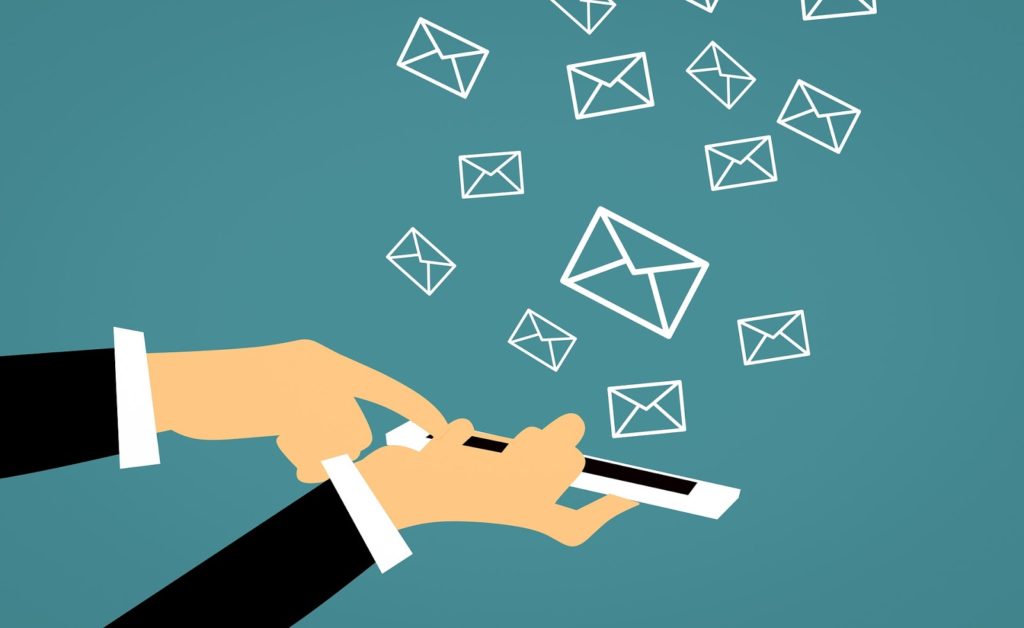
About Trinity Insight
Trinity Insight is a full suite of professional services designed to drive traffic, convert customers, and retain loyalty. Since 2006 hundreds of eCommerce brands have turned to Trinity to optimize and grow. Interested in enhancing your email marketing program? Take our email maturity self-assessment and discover how to enhance your program.


